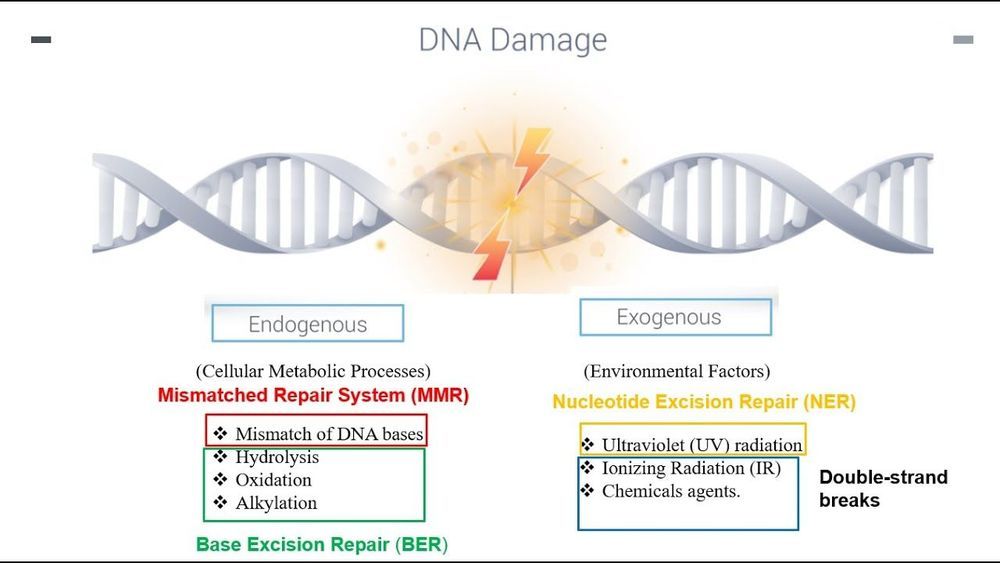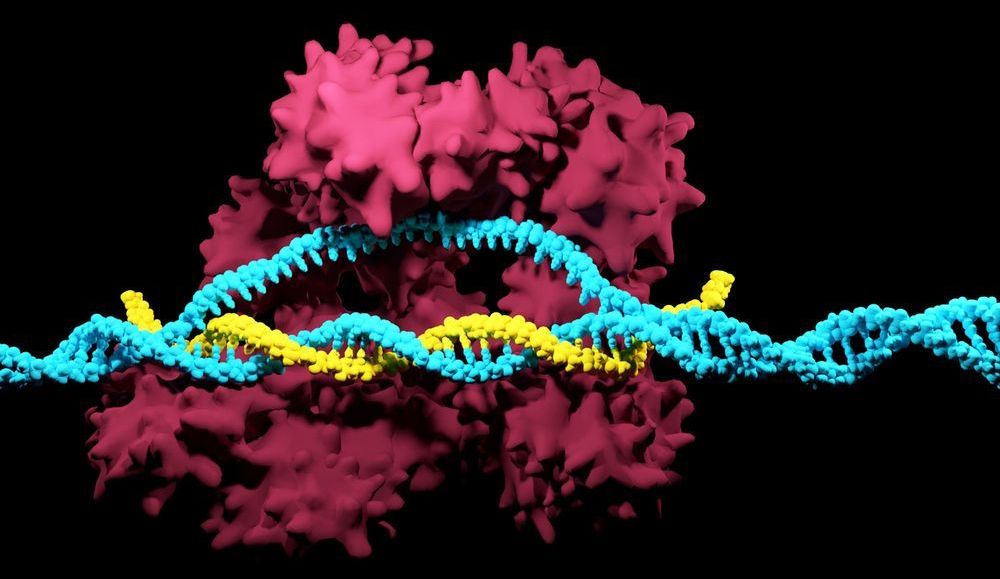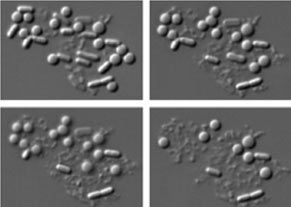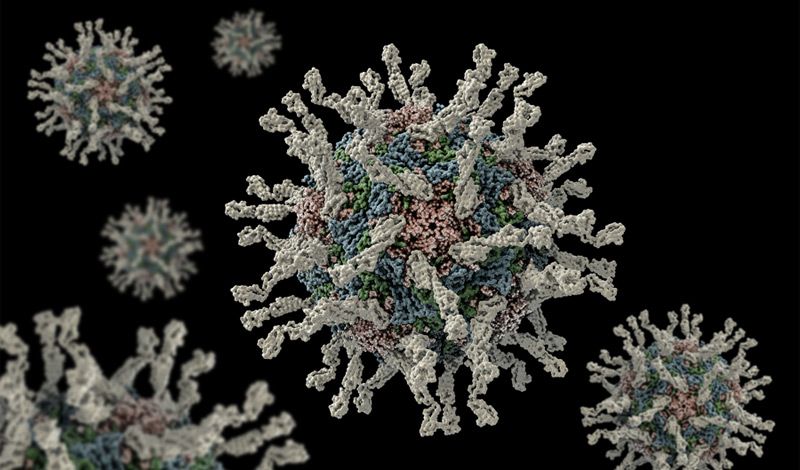Archive for the ‘biotech/medical’ category: Page 1573
Aug 26, 2020
Handheld device could detect CRISPR bioweapons before they spread
Posted by Quinn Sena in categories: biotech/medical, genetics, military
Bits of DNA known as gene drives that force themselves through a population could be use maliciously, but thankfully there is a way to detect them before they spread.
Aug 26, 2020
A ‘Kill Switch’ for Rogue Microbes
Posted by Quinn Sena in categories: bioengineering, biotech/medical, genetics
Biologists often speak of switching genes on and off to give microbes new abilities–like producing biofuels or drugs, or gobbling up environmental toxins. For the most part, though, it’s nearly impossible to turn off a gene without deleting it (which means you can’t turn it on again). This limits biologists’ ability to control how much of a particular protein a microbe produces. It also restricts bioengineers’ ability to design new microbes.
Now researchers at Boston University, led by biomedical engineering professor James Collins, have developed a highly tunable genetic “switch” that offers a greater degree of control over microbes. It makes it possible to stop the production of a protein and restart it again. The switch, which could be used to control any gene, can also act as a “dimmer switch” to finely tune how much protein a microbe would produce over time.
The researchers made a highly effective microbe “kill switch” to demonstrate the precision of the approach. For years, researchers have been trying to develop these self-destruction mechanisms to allay concerns that genetically engineered microbes might prove impossible to eradicate once they’ve outlived their usefulness. But previous kill switches haven’t offered tight enough control to pass governmental regulatory muster because it was difficult to make it turn on in all the cells in a population at the same time.
Aug 26, 2020
A thermal invisibility cloak actively redirects heat
Posted by Quinn Sena in categories: biotech/medical, materials
Light, sound, and now, heat — just as optical invisibility cloaks can bend and diffract light to shield an object from sight, and specially fabricated acoustic metamaterials can hide an object from sound waves, a recently developed thermal cloak can render an object thermally invisible by actively redirecting incident heat.
The system, designed by by scientists at the Nanyang Technological University (NTU) in Singapore, has the potential to fine-tune temperature distribution and heat flow in electronic and semiconductor systems. It has application in devices with high requirements for efficient dissipation and homogenous thermal expansion, such as high-power engines, magnetic resonance imaging (MRI) instruments, and thermal sensors.
“Because of its shape flexibility, the active thermal cloak might also be applied in human garments for effective cooling and warming, which makes a lot of sense in tropical areas such as Singapore,” said Prof. Baile Zhang of NTU.
Aug 26, 2020
FDA Approves Cometriq to Treat Rare Type of Thyroid Cancer
Posted by Quinn Sena in categories: biotech/medical, futurism
This is an essay written at the end of the first year of an oncology fellowship that was filled with ward months seeing leukemia, lymphoma, solid malignancies, and multiple hematologic abnormalities. In the future, I may look back at this essay and see myself as naïve, truly optimistic, and not yet weathered and jaded from years of success and failure. What I have learned can be summarized here, as many of us do while looking at consults or book s, by skipping to the end. Remember: don’t quit! There are good days and bad days for us, but no matter how high the high or low the low, the patient is the one with the disease. Screen and enroll patients in clinical trials, as research brought us the treatment choices we have today. Dr Michael Craig, one of my mentors in fellowship, left a note near the fellows’ microscope. I have stared at acute leukemia through those eyepieces, and made therapeutic decisions and diagnoses that changed people’s lives. The note encompasses what we do, what we represent as oncologists. It reads: “Cancer sucks. What can you do? Call me with questions.”
Richard Pazdur, MD
The US Food and Drug Administration today approved Cometriq (cabozantinib) to treat medullary thyroid cancer that has spread to other parts of the body (metastasized).
Aug 26, 2020
Researchers find method to regrow cartilage in the joints
Posted by Jeff Myers in category: biotech/medical
In laboratory studies, Stanford School of Medicine researchers have found a way to regenerate the cartilage that eases movement between bones.
Aug 26, 2020
US defense officials eyeing potential threat of coronavirus as bioweapon
Posted by Quinn Sena in categories: biotech/medical, chemistry, military
Basically it behaves like a bioweapon as it has a spread that has encompassed the earth.
US intelligence officials are probing the possibility that America’s enemies might use the coronavirus as a bioweapon, according to an alarming report.
The Department of Defense is monitoring for the potential of the virus to be weaponized, possibly against prominent, high-level targets, three people close to the matter told Politico.
Continue reading “US defense officials eyeing potential threat of coronavirus as bioweapon” »
Aug 26, 2020
Africa has eradicated wild poliovirus
Posted by Future Timeline in category: biotech/medical
Africa has been declared free of wild polio, the second human virus to be eradicated from the continent since smallpox 40 years ago.
Aug 26, 2020
Functioning liver cells regenerate in pig lymph nodes, and a human trial is coming
Posted by Quinn Sena in category: biotech/medical
Pitt researchers demonstrated that pigs can grow functioning auxiliary livers in their abdominal lymph nodes after their own hepatocytes are isolated and injected into them. Startup LyGenesis is working to bring the method into human clinical trials later this year.

This Video Explains the DNA Repair Mechanisms That Are Mismatched Repair System (MMR), Base Excision Repair (BER) And Nucleotide Excision Repair (NER).















